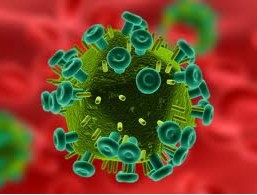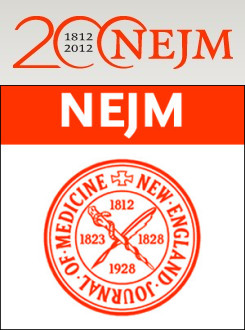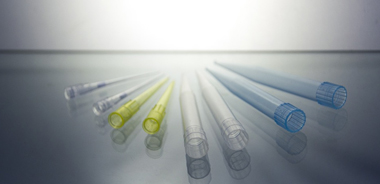导读:国际著名杂志New England Journal of Medicine在线刊登了来自美国华尔特-里德陆军研究院、杜克大学以及其他超过25家研究机构的科研人员的研究成果,研究者解析了RV144艾滋病疫苗可以保护某些受试者对抗HIV的机理,由此发现了免疫反应有可能在其中发挥了重要作用的一些关键线索。

近日,国际著名杂志New England Journal of Medicine在线刊登了来自美国华尔特-里德陆军研究院、杜克大学以及其他超过25家研究机构的科研人员的研究成果,研究者解析了RV144艾滋病疫苗可以保护某些受试者对抗HIV的机理,由此发现了免疫反应有可能在其中发挥了重要作用的一些关键线索。
在泰国开展的RV144试验是首次在预防HIV感染上显示出一些效果的HIV疫苗研究。“新研究补充和扩展了在RV144试验中看到的试验结果,为我们提供了新的见解,或可促使开发出更好更持久的HIV疫苗,”文章的资深作者、美国军方艾滋病研究计划机构Jerome Kim上校说。
在这篇文章中,研究人员针对在疫苗受试者体内引发的免疫反应进行了分析,发现不同类型的抗体反应与HIV的感染率高低有关。
杜克大学领导该研究的Barton Haynes博士说:“这是一次前所未有的合作研究,汇集了来自世界各地的科研人员通过开展免疫功能比较测试解析了RV144试验的结果。通过将那些HIV感染者与未感染者比较,我们相信我们已经找到了一些非常重要的线索揭示RV144疫苗疗法有可能是如何发挥作用的。”
第一个发现就是抗HIV外壳(包膜蛋白)特殊区域(称为V1V2)的特异性IgG抗体与疫苗接种者的HIV较低感染率相关。其前提是IgG抗体结合到了V1V2区域,它们就有可能帮助预防感染。
另一个发现是疫苗接种者血液中另一种不同类型的包膜结合抗体(IgA)水平越高,HIV疫苗的保护效率看起来就越差。科学家们猜测这些抗HIV包膜另一区域的IgA抗体有可能与疫苗诱导的保护应答产生了相互干扰。
科学家们曾于2009年在《新英格兰医学杂志》上发布了RV144疫苗临床试验结果,当时在泰国有1.6万参与了这项试验研究。这些结果表明赛诺菲-安万特制药集团(Sanofi-Aventis)的ALVAC 疫苗与VaxGen公司的AIDSVAX疫苗联合使用不仅安全,且可将HIV感染率降低约31.2%。这些数据第一次证实了在人体中安全有效的预防性HIV疫苗是有可能实现,并为解析与感染率相关的疫苗诱导的免疫反应提供了机会。
新研究发现提供了一个新的可测试的假说,如果得到验证,或可帮助科学家们优先选出可用于未来临床试验的候选疫苗,由此加速开发出更有效的疫苗。Nelson Michael上校指出:“不同的HIV疫苗有可能以不同的途径来保护对抗HIV。我们还需要开展更多的研究来全面了解这些结果,以确定是否将其推广到其他类型的HIV疫苗或类似疫苗研究中。”

Immune-Correlates Analysis of an HIV-1 Vaccine Efficacy Trial
Barton F. Haynes, M.D., Peter B. Gilbert, Ph.D., M. Juliana McElrath, M.D., Ph.D., Susan Zolla-Pazner, Ph.D., Georgia D. Tomaras, Ph.D., S. Munir Alam, Ph.D., David T. Evans, Ph.D., David C. Montefiori, Ph.D., Chitraporn Karnasuta, Ph.D., Ruengpueng Sutthent, M.D., Ph.D., Hua-Xin Liao, M.D., Ph.D., Anthony L. DeVico, Ph.D., George K. Lewis, Ph.D., Constance Williams, B.S., Abraham Pinter, Ph.D., Youyi Fong, Ph.D., Holly Janes, Ph.D., Allan DeCamp, M.S., Yunda Huang, Ph.D., Mangala Rao, Ph.D., Er
BACKGROUND: In the RV144 trial, the estimated efficacy of a vaccine regimen against human immunodeficiency virus type 1 (HIV-1) was 31.2%. We performed a case–control analysis to identify antibody and cellular immune correlates of infection risk.
METHODS: In pilot studies conducted with RV144 blood samples, 17 antibody or cellular assays met prespecified criteria, of which 6 were chosen for primary analysis to determine the roles of T-cell, IgG antibody, and IgA antibody responses in the modulation of infection risk. Assays were performed on samples from 41 vaccinees who became infected and 205 uninfected vaccinees, obtained 2 weeks after final immunization, to evaluate whether immune-response variables predicted HIV-1 infection through 42 months of follow-up.
RESULTS: Of six primary variables, two correlated significantly with infection risk: the binding of IgG antibodies to variable regions 1 and 2 (V1V2) of HIV-1 envelope proteins (Env) correlated inversely with the rate of HIV-1 infection (estimated odds ratio, 0.57 per 1-SD increase; P=0.02; q=0.08), and the binding of plasma IgA antibodies to Env correlated directly with the rate of infection (estimated odds ratio, 1.54 per 1-SD increase; P=0.03; q=0.08). Neither low levels of V1V2 antibodies nor high levels of Env-specific IgA antibodies were associated with higher rates of infection than were found in the placebo group. Secondary analyses suggested that Env-specific IgA antibodies may mitigate the effects of potentially protective antibodies.
CONCLUSIONS: This immune-correlates study generated the hypotheses that V1V2 antibodies may have contributed to protection against HIV-1 infection, whereas high levels of Env-specific IgA antibodies may have mitigated the effects of protective antibodies. Vaccines that are designed to induce higher levels of V1V2 antibodies and lower levels of Env-specific IgA antibodies than are induced by the RV144 vaccine may have improved efficacy against HIV-1 infection. The views expressed in this article are those of the authors and should not be construed as official or as representing the views of the Department of Health and Human Services, the National Institute of Allergy and Infectious Diseases (NIAID), the Department of Defense, the Department of the Army, or the Department of Veterans Affairs. Supported in part by grants from the Bill and Melinda Gates Foundation Collaboration for AIDS Vaccine Discovery (to Drs. Haynes, Koup, and Montefiori); an interagency agreement between the U.S. Army Medical Research and Materiel Command and the NIAID (Y1-AI-2642-12); a cooperative agreement between the Henry M. Jackson Foundation for the Advancement of Military Medicine and the Department of Defense (W81XWH-07-2-0067); and grants from the NIAID to the Center for HIV/AIDS Vaccine Immunology (U01-AI-067854) and the HIV Vaccine Trials Network Laboratory Program (UM1-AI-068618).








